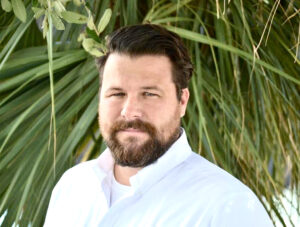By Jon Paul Brooker, Florida Conservation
As Florida continues to wisely invest in high-profile environmental initiatives such as the restoration of The Everglades and the Indian River Lagoon, the governor and the Legislature should remember Tampa Bay and other bodies of water also desperately need more attention.
To their credit, Gov. Ron DeSantis and state lawmakers have made The Everglades and Indian River Lagoon top priorities. The governor recently announced plans for $100 million a year in water quality projects for the Indian River Lagoon to help collect and treat stormwater runoff. The Everglades’ restoration efforts are expected to get additional billions in the coming years.
While those restoration projects are essential, other bodies of water around the state should not be ignored. State legislators could take a significant step this spring toward making sure key waterways all around Florida get the appropriate attention by requiring the state to develop Basin Management Action Plans for each of them. We need those basin plans for Tampa Bay, Sarasota Bay and so many more water bodies – from Pensacola Bay and Apalachicola Bay in the Panhandle to Biscayne Bay in South Florida.

At the same time, we need to implement recommendations to improve water quality that already exist. The state’s Blue-Green Algae Bloom Task Force has provided useful recommendations that would reduce the impact of excessive nutrients on fueling harmful algae blooms. Now, the governor and the Legislature should put those recommendations into state law and see that they are carried out.
Why is it so important to create these plans and see them through?
Water quality is key to our tourist-based economy, our quality of life and the preservation of our overall environment. And Floridians know all too well what happens when water quality suffers. For example, Florida’s manatee population has declined by 25% over just the past two years, and the main cause is poor water quality killing their food source.
Simultaneously, we need to work harder to continue to change the public’s attitude toward plastics and other marine debris that pollute our beaches and waterways and endanger marine life. Balloons are among the most common items found on beaches during the International Coastal Cleanup. Floridians are now allowed to release up to nine balloons; the Legislature should ban any release of balloons.
Another effective way to protect the health of our beaches and waterways would be for the Legislature to again allow local governments to ban single-use plastics – or approve a statewide ban. This is an enormous economic issue because the health of our beaches and our waterways is directly tied to the health of our economy.
It’s important for the governor and the Legislature to make restoration of The Everglades and the Indian River Lagoon a priority. But we need to do more this spring to create the paths to improving water quality and protecting beaches throughout Florida – and we can start by banning balloon releases and single-use plastics.
Jon Paul “J.P.” Brooker is the director of Florida Conservation and an attorney for Ocean Conservancy. He is a native Floridian based in St. Petersburg.
This op-ed was originally published in the Tallahassee Democrat, which is a member of The Invading Sea media collaborative. The collaborative focuses on the threats posed to Florida by the warming climate.



